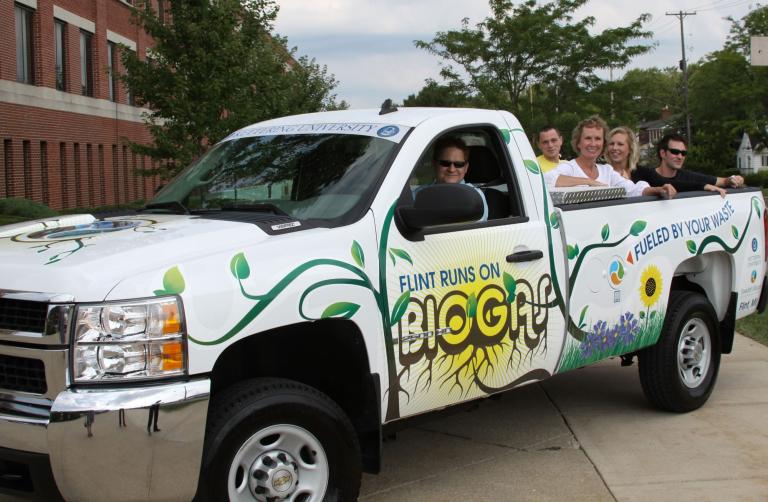
The United States Environmental Protection Agency has highlighted the efforts of Kettering University in a newly released document that provides resources and information for communities affected by the recent restructuring of the U.S. auto industry.
The document entitled, "Roadmap for Auto Community Revitalization," was released on Sept. 4, 2013, and is being marketed as a toolkit for former auto-manufacturing communities tackling the challenges of brownfields as they transition to a new economy.
The report highlights Kettering's collaborative efforts with the state-sponsored Center for Energy Excellence that helped attract Sweden's Biogas International renewable energy plant at the city's municipal waste water plant (p. 16).
The project is estimated to be a $3 million investment in Flint. The investment complement's the city's attempt at rebounding in the new economy with technology centers that can provide high-skilled local jobs in the future. Former automotive sites can be considered assets for future development.
Complementing the efforts of the city, In 2010, Kettering unveiled the The Innovation Center - a 9,000 square-foot technology incubator on the corner of Bluff Street and Cottage Grove.
Kettering also owns a portion of the Chevy in the Hole property, located at the corner of Bluff Street and Chevrolet Avenue. The university is currently in the process of securing funding to build an automotive proving ground and research facility on this portion of the Chevy in the Hole property. It would serve as an educational facility for students as well as a venue for industry partners to conduct product research and testing. The EPA awarded this site with $350,000 in funding for clean-up and redevelopment in August 2013.
In all, 35 communities are highlighted in the EPA Roadmap, 10 of them in the state of Michigan alone.
The roadmap/toolkit:
- Identifies the challenges facing auto communities that seek to revive local economies and pursue property revitalization.
- Documents case study and success story examples.
- Describes useful strategies that are being put to work in cities and towns across the nation.
- Highlights resources, initiatives, and incentives available through federal and state governments and non-governmental organizations.
- Describes other key tools for community revitalization, including collaborative partnerships, innovation clusters, technical assistance teams, and funding/financing tools.
Read the full report.